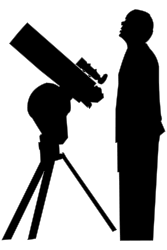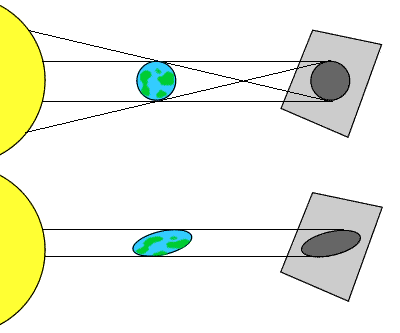Or search by topic
Number and algebra
Geometry and measure
Probability and statistics
Working mathematically
Advanced mathematics
For younger learners
Published 2007 Revised 2011
Shaping the Universe I - Planet Earth

For thousands of years mankind has been trying to work out the
shape and structure of the universe we live in. Is the earth flat
or round? Do the planets orbit around the Earth or the Sun? What
shape are their orbits? Where are the stars in relation to the
planets? Mathematics has always been crucial for this endeavour.
It's all very well looking up at the stars, but you need
mathematical theories and systems to make sense of it all. Much of
the history of astronomy concerns the use of the most basic shapes
- circles, spheres etc - and yet people have disagreed enormously
because of our inability actually to see what shape things are.
This is the first in a series of articles exploring how astronomers
over the ages have tried to visualise the cosmos around us.
Pythagoras, like many Ancient Greeks, believed that circles and
spheres were the most perfect shapes and therefore that the earth
and all the heavenly objects must be spherical. So his model was
based on aesthetic reasoning - he believed that the most beautiful
and 'harmonious' shape must be the true shape of the earth. He did
not attempt to prove it, because it just seemed natural that the
world should be geometrically perfect. If you could imagine the
world being any other shape that you think is beautiful, what would
it be? How could you test whether or not it was the right shape
without travelling all the way around the world or looking at it
from space? Have a look at some different earth shapes here
. To find out more about Pythagoras see our previous articles here
and here
.
Aristotle also believed that the world was spherical, but he used
observations to prove that it was true. He pointed out that when
the earth casts a shadow on the moon during a lunar eclipse, the
shadow is always circular. Can you think why this proved that the
earth was a sphere? Try visualising what the shadow would look like
if the earth was a flat disc. What would happen to the shadow if
you tilted or rotated the disc in different directions? You could
even try this with a lamp in a darkened room and some different
shapes to represent the earth.

As you can see then, the only shape that would always cast a
circular shadow is a sphere. Aristotle also noticed that people
could see different stars and constellations depending on how far
north or south they were, so that also suggested that the earth was
spherical.
If you have seen the film Pirates of the Caribbean: at world's
end , where the ship falls off the edge of the world over a
giant waterfall, then you will know that a lot of people used to
think the earth was flat. Even though astronomers knew that it was
round, it didn't convince a lot of ordinary folk who were
frightened of sailing too far and falling into oblivion. Can you
think of some reasons why the idea of a flat earth seemed so
plausible to so many people?
Today we know that the earth is spherical because we have been
able to measure its curvature very accurately and even see it from
space. However we also know that it isn't a perfect sphere, and
this was predicted by Isaac Newton as a consequence of his theory
of gravitation. In fact the earth bulges out slightly around the
middle, and is slightly flatter at the north and south poles.

The next instalment in this series of articles is
Shaping the Universe II - The Solar System , where we shall be
looking at how astronomers over the ages visualised and modelled
the other planets and objects surrounding the Earth.
You may also like
Rule of Three
If it takes four men one day to build a wall, how long does it take 60,000 men to build a similar wall?
Crossing the Atlantic
Every day at noon a boat leaves Le Havre for New York while another boat leaves New York for Le Havre. The ocean crossing takes seven days. How many boats will each boat cross during their journey?
Fixing the Odds
You have two bags, four red balls and four white balls. You must put all the balls in the bags although you are allowed to have one bag empty. How should you distribute the balls between the two bags so as to make the probability of choosing a red ball as small as possible and what will the probability be in that case?

